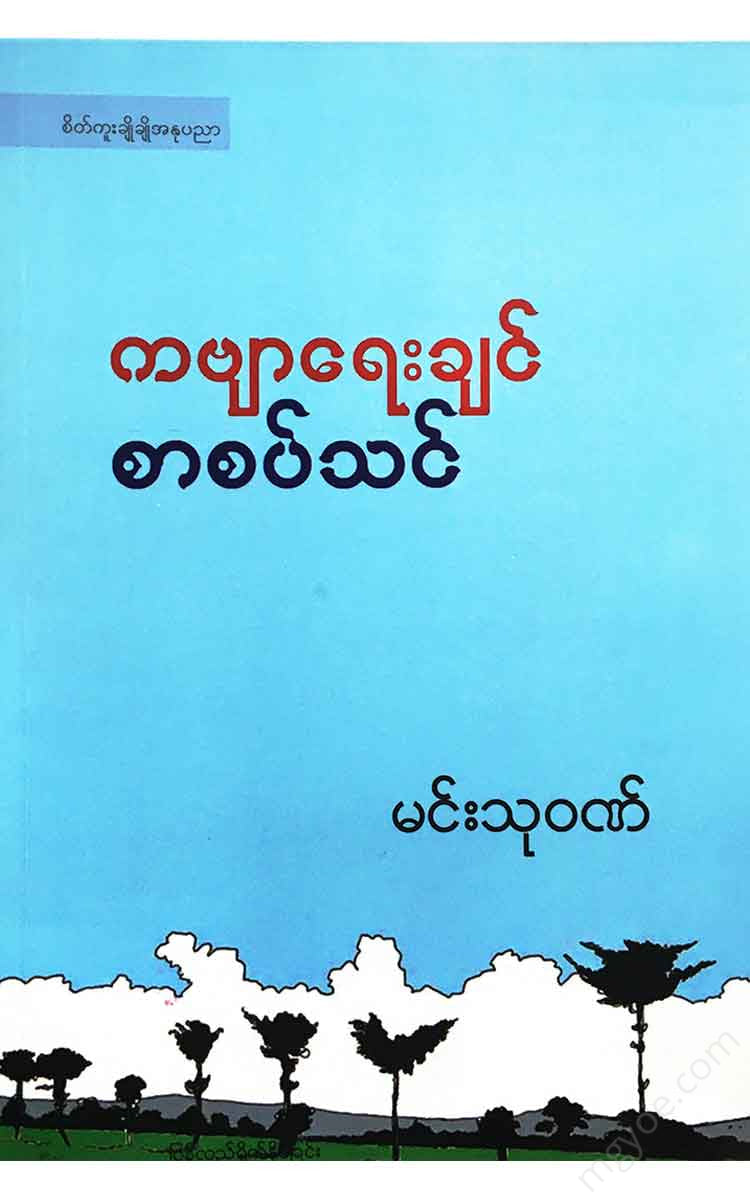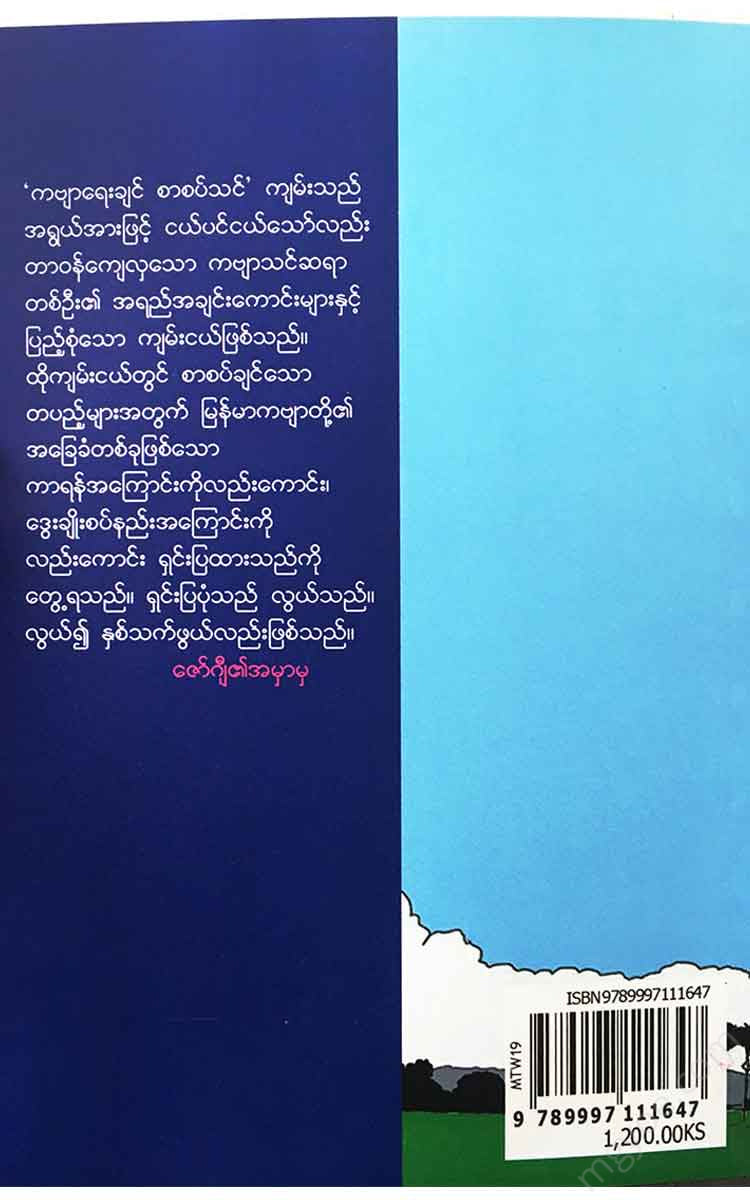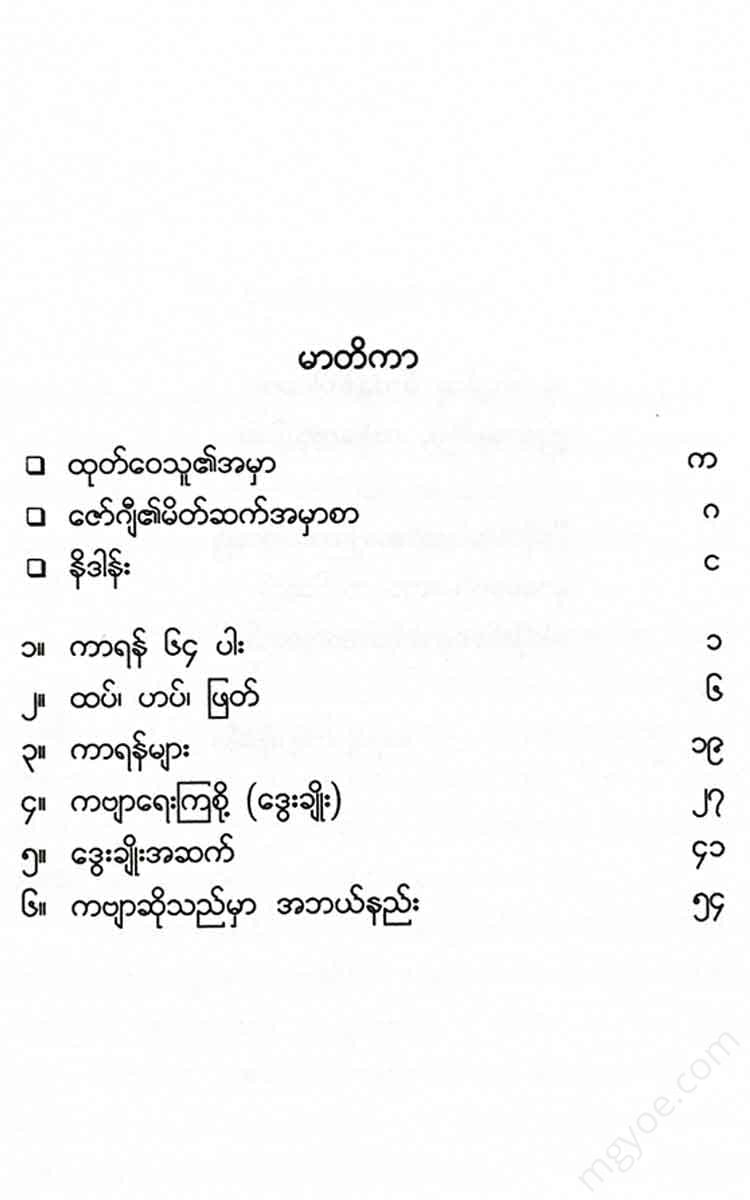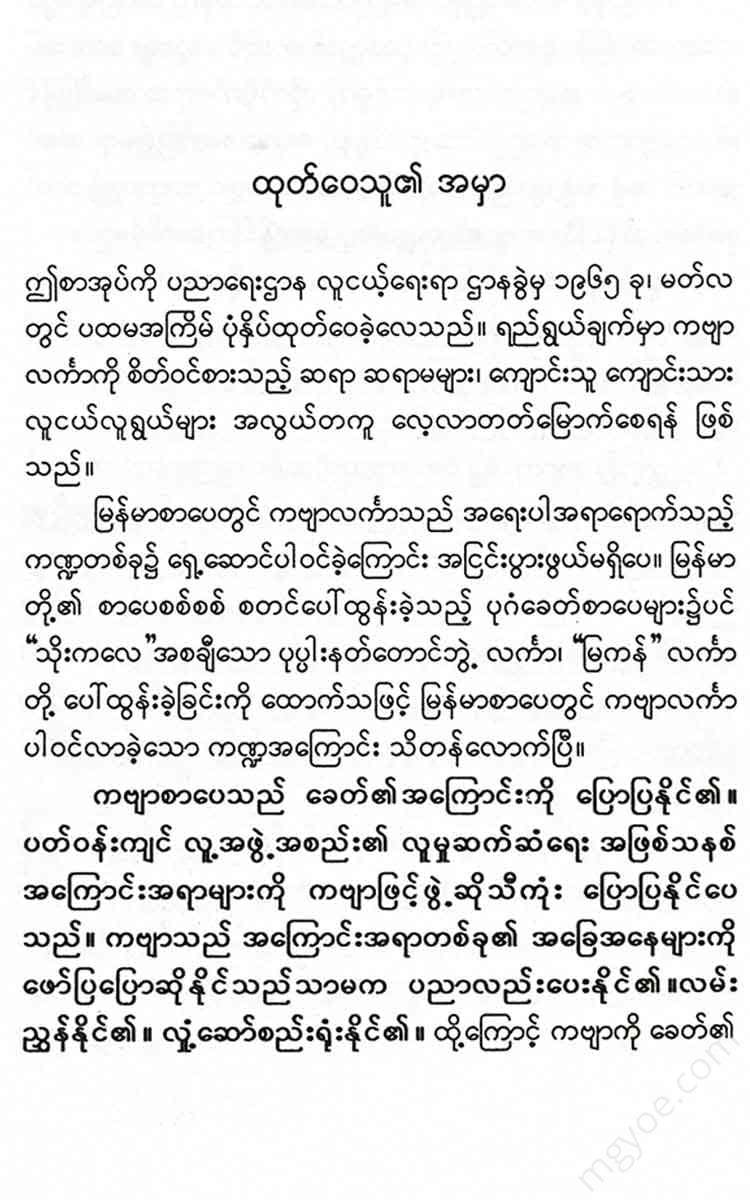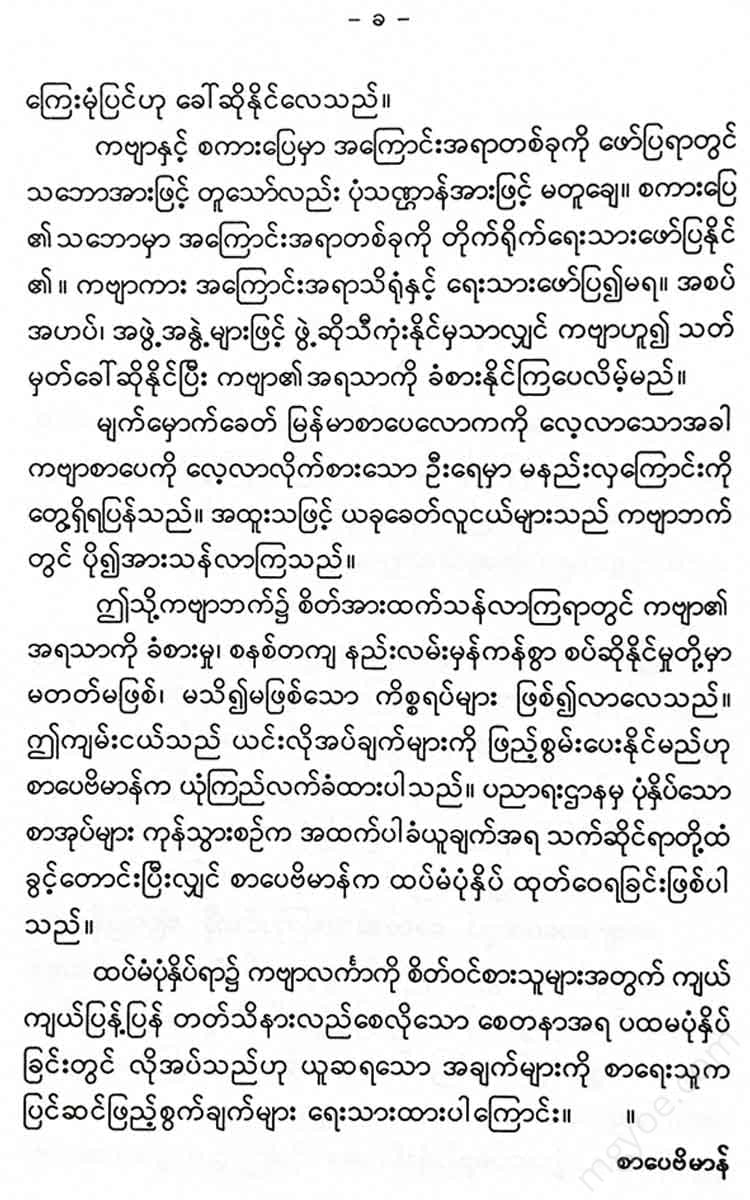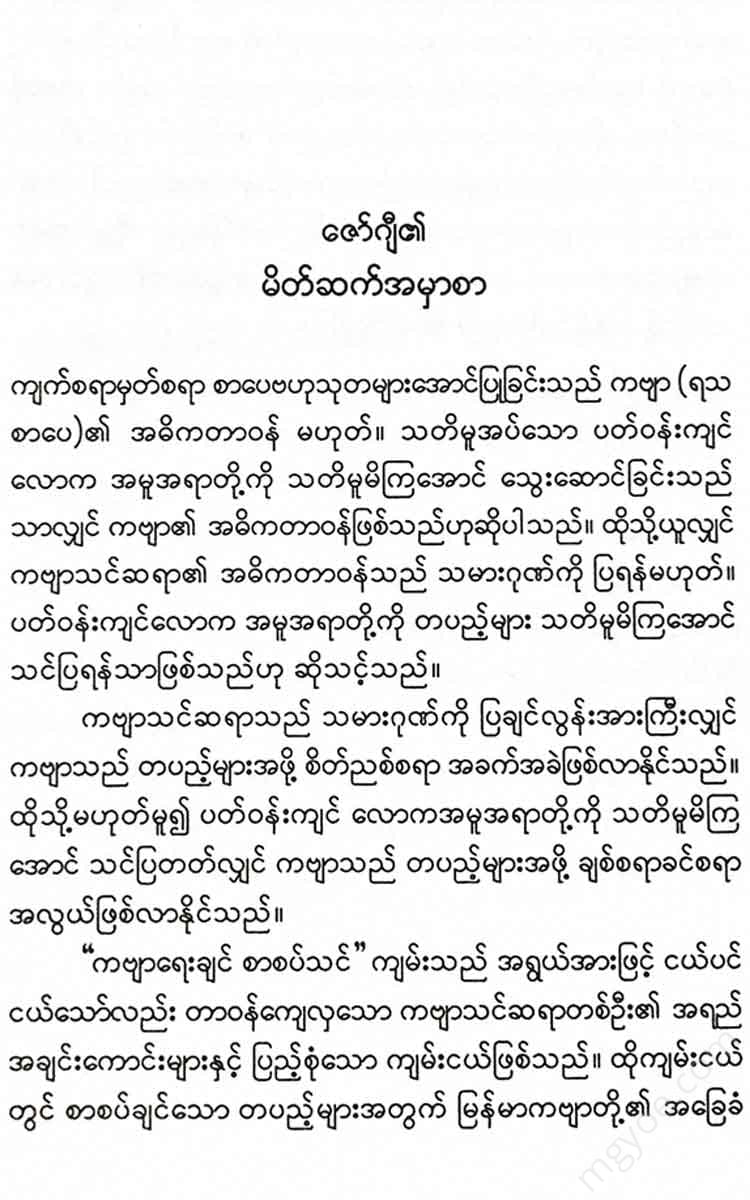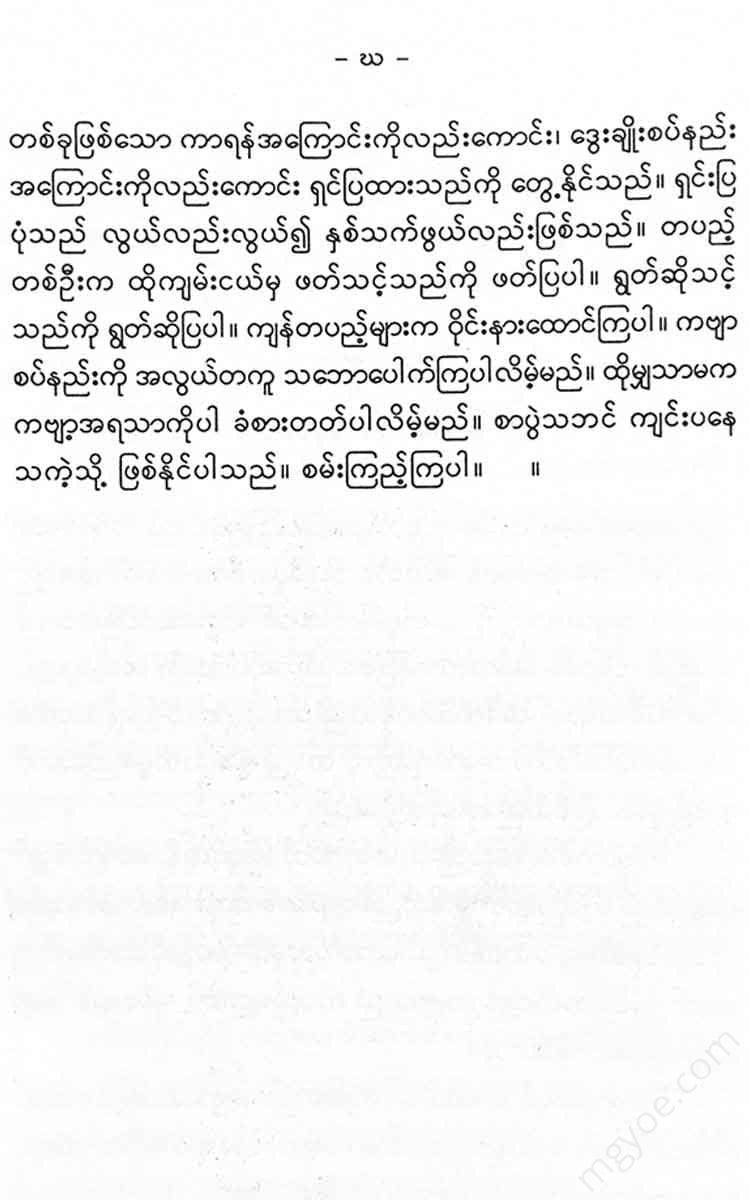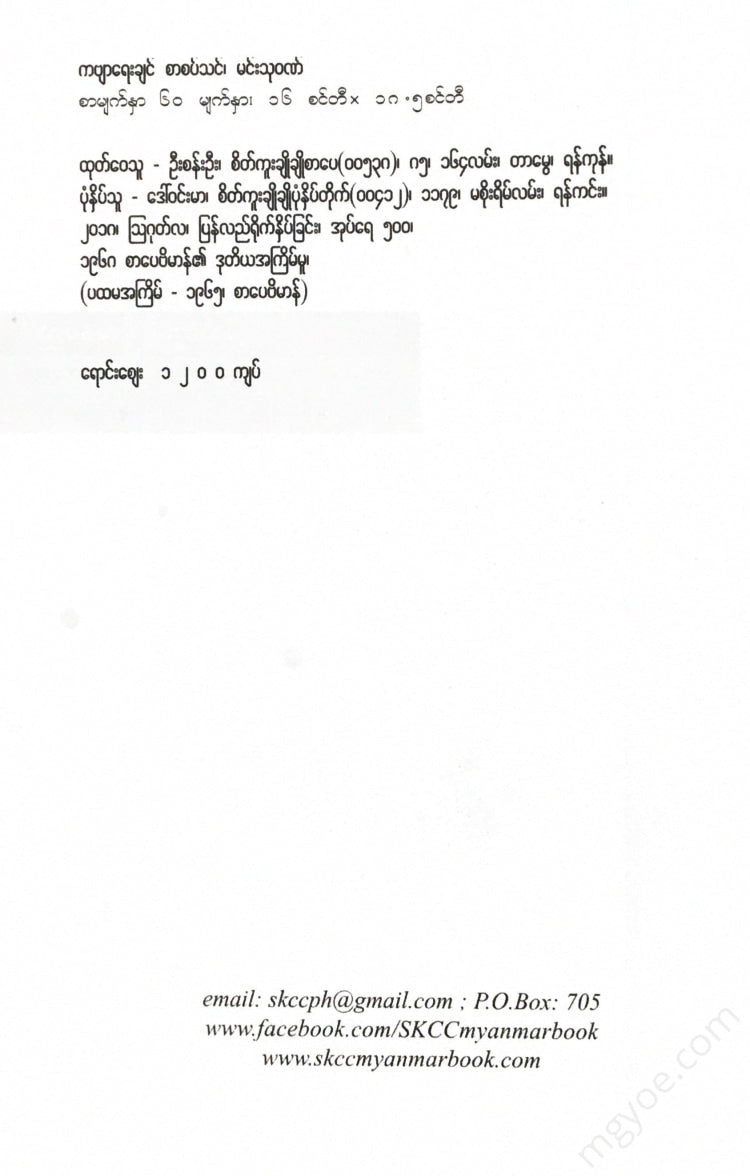စိတ်ကူးချိုချိုစာပေ
Min Thuwan - If you want to write poetry, write a composition.
Min Thuwan - If you want to write poetry, write a composition.
Couldn't load pickup availability
64 rhymes
A person who wants to compose needs to understand the word "karaan". Karaan is not something special. It is just the sound of the syllable. For example, the sound of the syllable "ka-akra" is "ka" (a).
The sound of the consonant is (a). The sound of the consonant is (a). In the future, we will show the consonants in parentheses. Many students have learned this method when they were in kindergarten. I would like to share with you the words that Maung Ukka and Maung Nyo said about consonants.
Once, when they went to the bottom of the temple of the jewels, where the children were playing happily, they could not find a stone, so they dug in the ground and got it. At that time, Venerable Uttama Kyaw said to Venerable Maha Thila Vamsa, “Hey, brother, I have a stone because I dug in the ground and got it.” Venerable Maha Thila Vamsa said,
He replied, “Hey, Maung Ukka. You have to dig the ground to get it. I have a small child who can be found in the head of the school pillar without digging the ground.” When the monk Natmee Lin heard this, he remembered that they were two children with amazing spirits.
Looking at this performance, it can be said that seven-year-old Maung Ukka and Maung Nyo already know the meaning of rhyme. The “kha ae” that Maung Ukka and Maung Nyo say is nothing else. kha + (ae) = “kha”. It means earth, stone, etc. The “sau” that Maung Nyo says is nothing else. sa + (u) = “su”. It means the type of writing that was used in their time. Thus, we know that the sound of ke is (ae) and the sound of su is (u). In other words, the rhyme of ke is (ae). It is understood that the rhyme of su is (u).
There are 64 rhymes (sounds) in Burmese. (See page 3.)
It's not scary. It's already known to both children and adults.
If you look at the chart and write it down, it's easy to understand and remember.
Roughly speaking, based on the leader rhyme, let's call it 1. "A" rhyme, 2. "A" rhyme, 3. "A" rhyme.
We will learn more about the importance of these three types of karana later.
First, read the attached chart, line by line, horizontally. Then, read the chart, line by line, vertically. You will notice the difference between horizontal and vertical. If you don't notice it the first time, read it a second time, a third time, etc. You will notice it.
Maung Okka and Maung Nyo are playing the game of "K+Ee Kaale" and "S+U Kaale" while walking and playing. You can play too. Let me give you some advice on how to play.
School-age children and adults love to use riddles, riddles, and riddles. You may already know about riddles and riddles. I think most young people may not know about riddles. One of our habits when we were young was to say, “Hey, kid. Are you going to school?” in a simple way, we would say, “Ha Hle Ka Taung Rate. Tiger Taung Go Taung Ma Lata.” If we expand on this way of saying riddles, Maung Ukka and Maung Nyo would say… Ha + (Ae) Ka + (Aung) Ra Nam (Ae). Ky + (Aung) Th + (Ae) Mala + (Ae) Mala + (Ae). If you practice saying them in this way, you will understand the meaning of rhyme 64 well. There is one thing to note. Aye Pa Kaa. Ae Pa Kaa etc. When the vowels “Ae” and “Ae” are added, according to the riddles we used to say when we were young, the word “Ae” is different. "It's like, 'Attapa tata'." According to the current method, how should we hide it? It's against the rules, but for convenience's sake.
It would be possible to hide it as “A+(Aye) +(A) Ku+(A)” etc. If you say “U Aye’s house”, you would say “A+(U) A+(Aye) +(Ei) A+(Oh) A+(House). Try it out. You can gradually improve it if you want.
